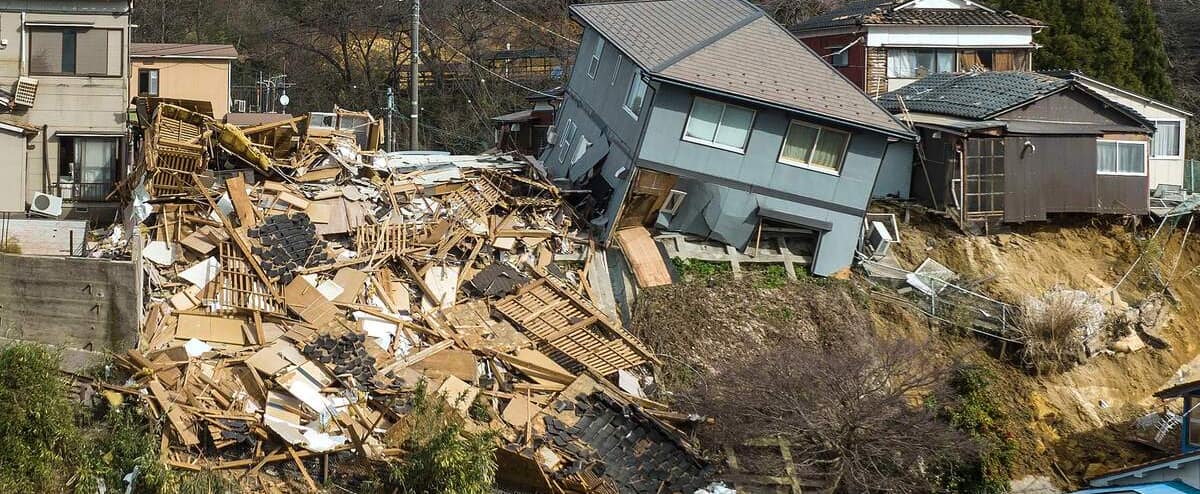Rescue workers in Japan are facing very unfavorable weather on Wednesday, while they are still trying to find survivors of the powerful earthquake which hit the center of the country on Monday, killing at least 73 people according to a new provisional toll.
• Read also: Five dead in collision between two planes at Tokyo-Haneda airport
• Read also: Earthquakes in Japan: no Canadians injured or missing
• Read also: Central Japan hit by 155 earthquakes since Monday
Along the roads, very damaged by subsidence or blocked by falling trees, large signs warn of possible landslides.
Authorities are calling for caution due to the heavy rains that have fallen since Wednesday morning and their consequences throughout the Noto Peninsula in Ishikawa Prefecture, a long, thin strip of land that extends into the Sea of Japan.
Emergency vehicles are finding their way with difficulty on roads blocked by large stones and uprooted trees.
AFP
“Be vigilant for landslides until Wednesday evening,” warned the Japan Meteorological Agency (JMA).
The Noto Peninsula and its port towns of Wajima and Suzu now resemble war zones after the New Year’s earthquake that hit mainly this region at 4:10 p.m. (07:10 GMT), reaching a magnitude of 7.5 according to the American Institute Geophysics (USGS) and 7.6 according to the JMA.
Several hundred aftershocks – some also strong – have occurred since this earthquake, and the tsunami which followed on Monday with waves of more than one meter swept away many boats, stranded on the quays or the roads on the shore. sea.

AFP
Thousands of buildings on the Noto peninsula were entirely or partially destroyed by the disaster and may still be destroyed by aftershocks, making rescue operations difficult. At each alert, rescuers must urgently evacuate the rubble.
Regional authorities report 73 dead and nearly 400 injured, a toll that is expected to rise.
“Catastrophic” situation
Masuhiro Izumiya, the mayor of Suzu, said that “virtually no homes” were still standing in part of this small town at the tip of the Noto Peninsula, according to television channel TBS. “The situation is catastrophic.”
More than 33,400 people have taken refuge in accommodation centers set up in different villages, according to the authorities, and nearly 30,000 homes are still without electricity in the Ishikawa department.

AFP
More than 110,000 homes in Ishikawa and two other departments are also deprived of running water, the Japanese government said on Wednesday.
“I am here (in a shelter) because I no longer have electricity, gas or water at home. And since there are always aftershocks, my house could collapse at any moment,” Yuko Okuda, 30, a resident of Anamizu, another small town on the Noto peninsula, told AFP.
“With an earthquake of magnitude 7.5, we should expect to have aftershocks for several months,” geologist Robin Lacassin, research director at the CNRS, told AFP on Tuesday.

AFP
The Ishikawa Department has asked Japanese people to stop calling loved ones affected by the earthquake, in order to preserve their phone batteries for essential calls.
Shinkansen, Japan’s high-speed trains, have resumed service in central Japan since Tuesday after some 2,400 passengers spent hours – 24 hours for some – stuck on the tracks or in stations.
The region’s highways have also reopened, making it easier to restock food and essential goods, although the state of the roads is slowing deliveries.

AFP
“More than 40 hours have passed since the disaster. We have a lot of testimonies from people who need to be rescued,” Prime Minister Fumio Kishida said on Wednesday after a new crisis meeting.
“This is a race against time and we continue to do our best to save lives, our priority,” he recalled.
Located on the Pacific Ring of Fire, Japan is one of the countries with the most frequent earthquakes in the world.

AFP
The Japanese archipelago is haunted by the memory of the terrible 9.0 magnitude earthquake followed by a giant tsunami in March 2011 on its northeastern coasts, a disaster which left some 20,000 people dead or missing.
This disaster also led to the Fukushima nuclear accident, the worst since Chernobyl in 1986.
This time, the series of earthquakes caused only minor damage to the nuclear power plants installed along the coast, according to their operators.
